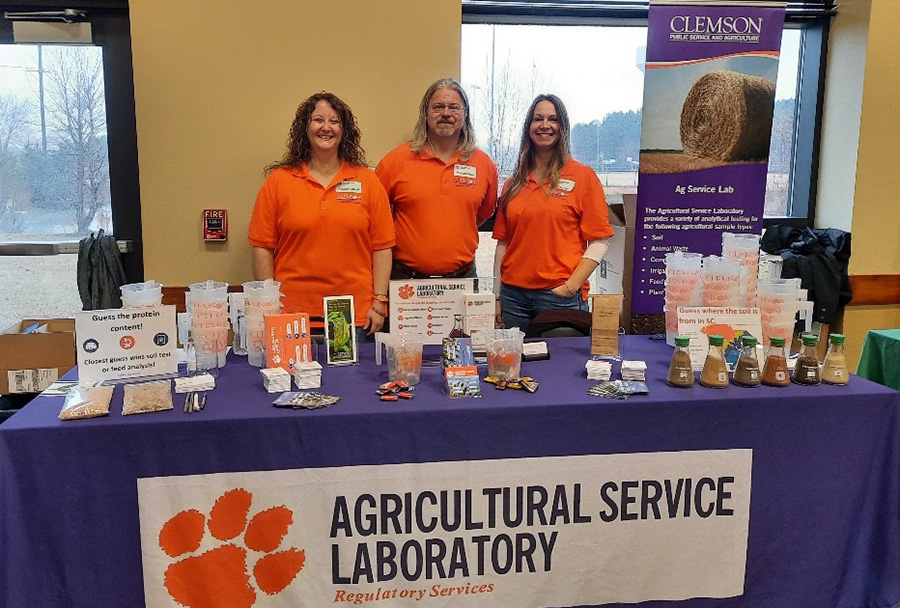Authors
Compiled by: Shannon Alford
Source authors include: Dr. Shannon Alford, Dr. Tim Drake, and Dr. Kathy Moore
Compiled by: Shannon Alford
Source authors include: Dr. Shannon Alford, Dr. Tim Drake, and Dr. Kathy Moore
In the mid-1800s, South Carolinians recognized the need for agricultural testing. Soil testing was originally recommended because of cotton production in SC. In a letter dated April 22, 1844 from Frederick Adolphus Porcher (1809-1888; College of Charleston professor) to Henry William Ravenel (1814-1887; planter and botanist) of Aiken, SC, Porcher advised chemical analysis of soils (pg. 2), sending hogs for exhibition, and mentions red clover. Porcher wrote the following, “We should also diligently [prosecute] an analysis of our soils. I do not believe the society can make a more judiciary appropriation of its funds than in analyzing everything that concerns our agriculture.”
Page 2 of letter from Porcher to Ravenel (Clemson University Libraries Digital Collections)
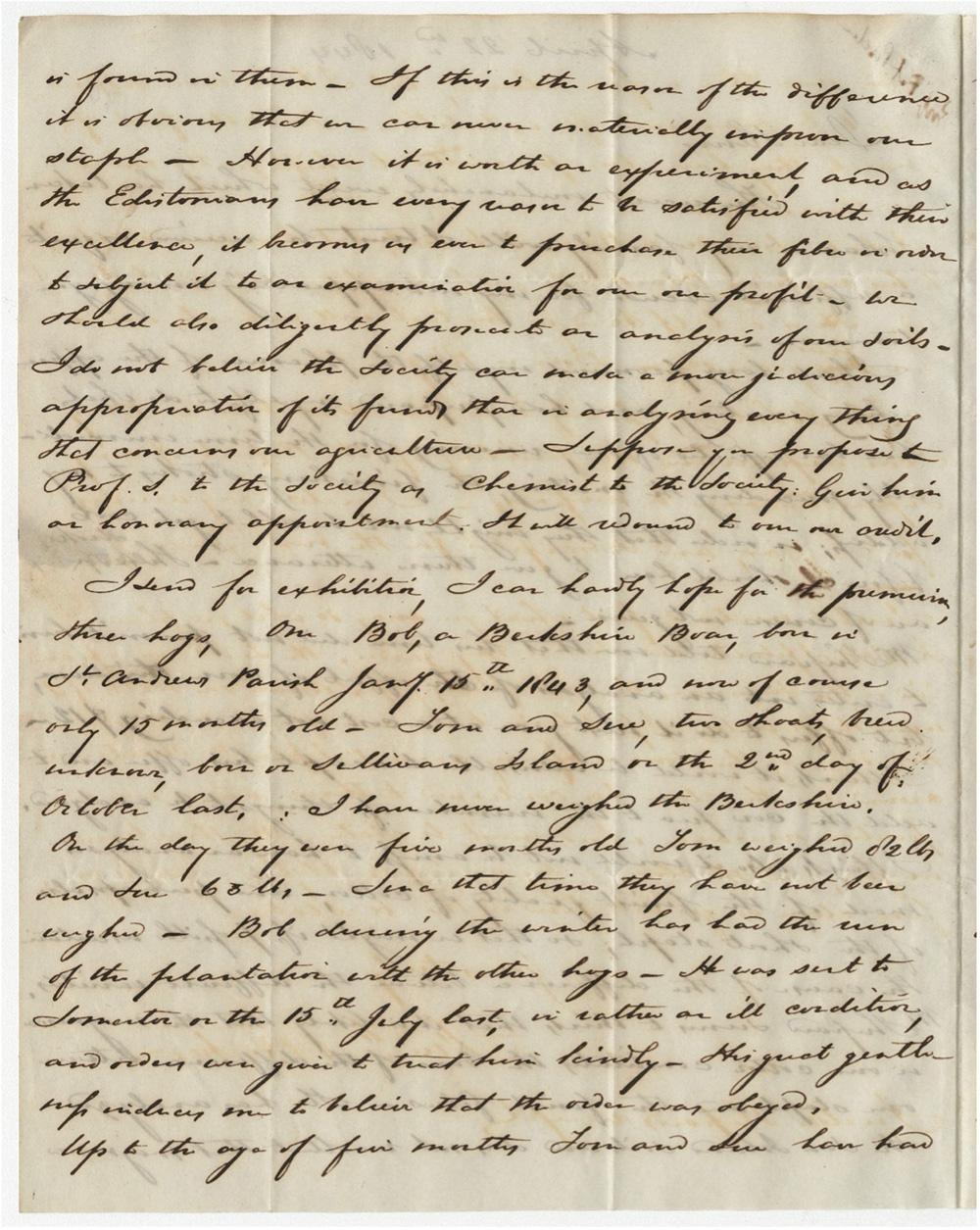
In 1890, before the first student was enrolled, agricultural chemical testing was initiated in South Carolina at Clemson Agricultural College through the fertilizer inspection and analysis program. This program was funded by the SC Fertilizer Tax, which had been established at twenty-five cents per ton in 1879. The responsibilities of fertilizer inspection and analysis in the state were given to Clemson College because the state’s new analytical chemistry laboratory was being built there (current-day Hardin Hall), and initially fertilizer analysis was a function of that department.
Clemson Agricultural College quickly moved to the national forefront during the 1893-1940 time period, especially in research areas devoted to soil conservation, crop diversification, new farming techniques, fertilization, irrigation, animal husbandry, and other aspects essential to improving productivity of farmland and preservation of the family farm in the southern states. Consistent and dependable financial support for the college by the farmers of South Carolina through fertilizer tax funding made this progress possible.
Because acidic soils in SC became a serious problem, in 1928, Dr. W. R. Paden at Clemson College began testing soil from South Carolina cotton fields for pH using hydroquinone titrations, and he recommended liming fields to address the issue. As a result, some farmers began mailing samples to Clemson for pH testing. The South's first public soil-testing program was established by 1938. During the first year, the lab tested 1,983 soil samples. Dr. H. Albritton administered the lab, which was located in Long Hall, and wrote recommendations for each sample submitted. The soil was collected in ice cream containers, about one-half pint, and mailed to the Soil Testing Laboratory, Agronomy Department, Agricultural Experiment Station, Clemson, South Carolina.
Long Hall, Constructed 1937 (Clemson University Libraries Digital Collections)
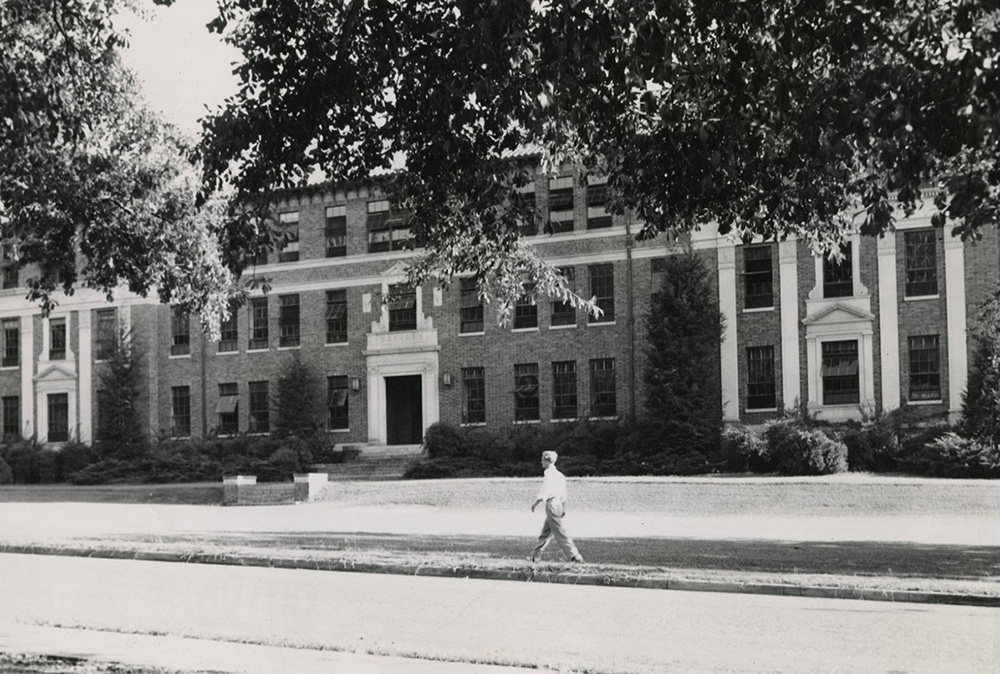
H.P. Cooper and others, 1937 (Clemson University Libraries Digital Collections)

From 1950 to 1954, Dr. H.P. Cooper, who became the namesake for the current ASL facility, supervised the laboratory. Sample analysis had expanded to 20,000 soil samples annually. As the soil-testing program grew along with the agricultural college, more instructional and laboratory space was required. Poole Hall was constructed in the early 1950s, and the Soil Testing Laboratory moved into the newly constructed building in 1955.
Construction of Poole Hall, 1954 (Clemson University Libraries Digital Collections
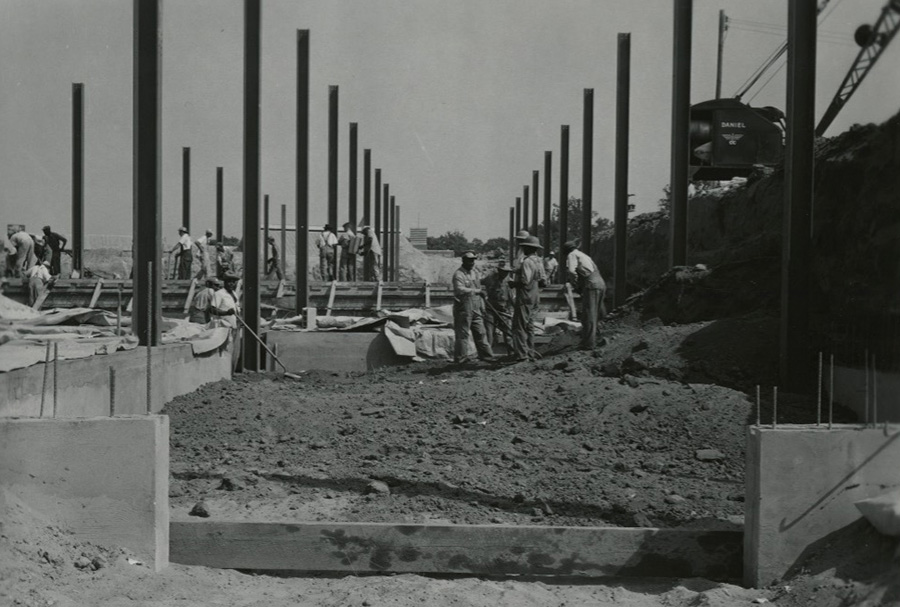
In 1959, the lab came under the direction of Dr. N.R. Page. For lime recommendations, Dr. Page started analyzing soil samples for buffer pH using a modified Adams-Evans buffer method. The Mehlich-I extractant was used for P, K, calcium (Ca) and magnesium (Mg). P and Mg were analyzed using colorimetric methods, and K and Ca were analyzed using turbidimetric methods. Guidelines were prepared for the county Extension agents to use to provide soil test recommendations. The reports were sent to the agents to make the recommendations.
During the following decades, farmers were heeding recommendations for liming and soil testing, which improved soil fertility. The laboratory analyzed approximately 35,000 samples for farmers in 1970 to 1971. Under Dr. L.P. Anderson's and Dr. G.R. Craddock's leadership in the 1970s, the soil-testing program was digitized with automated instrumentation, and computers were incorporated into soil testing operations. Flame photometry was introduced for analysis of K, and atomic absorption spectrophotometry was introduced for analyzing Ca and Mg. Additionally, a new building was designed in the late 1970s to house the laboratory and associated offices.
Women with data processors (ASL Collection)
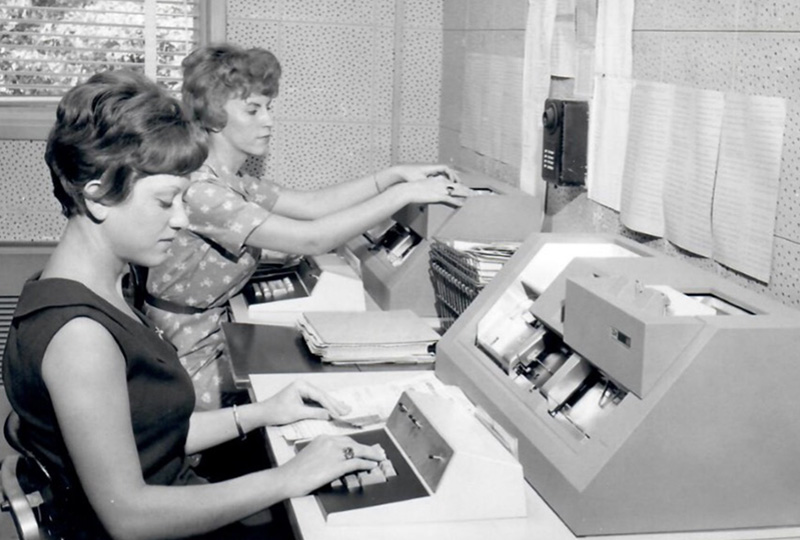
Dr. G.R. Craddock with computerized instrumentation (ASL Collection)
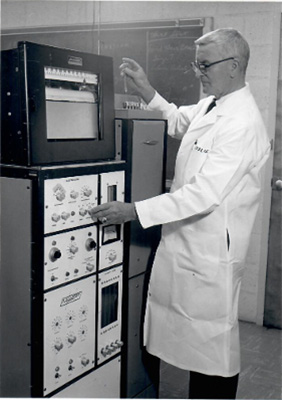
In 1978, Hoke Hill from the Department of Experimental Statistics, working with Dr. Parks and John Wells, wrote the program to computerize soil-testing recommendations. The reports now contained the recommendations needed based on the soil test results, and hard copies were mailed to the county Extension offices. The number of soil samples analyzed reached over 90,000 annually during this time.
The current home of the ASL, the H.P. Cooper Agricultural Service Laboratory, located on Old Cherry Road, was completed in 1980. At that time, plant tissue, feed and forage, and nematode assay labs were added to the services provided to the public.
Newly built ASL facility, circa 1980 (ASL Collection)
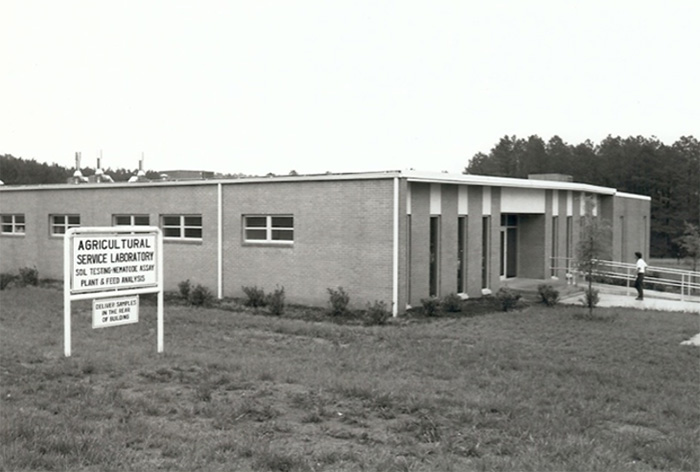
Stacked boxes containing samples at the ASL, circa 1980 (ASL Collection)
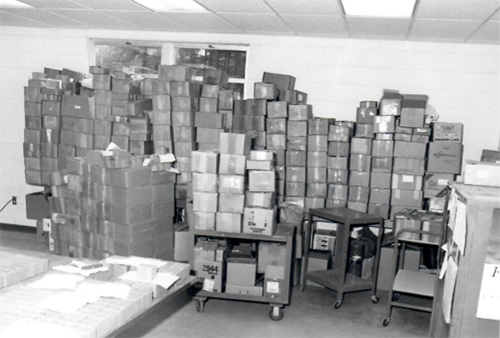
The ASL underwent several organizational and administration changes in the 1980s to 1990, including leadership by Dr. A.K. Torrence as Head of the Department of Agricultural Chemical Services. Dr. Charles Mitchell was named director of the Agricultural Service Laboratory with a staff of 17 people and served for 4 years. In October 1984, Dr. B. Lippert was appointed the new director of the lab. Under Dr. Lippert's direction an irrigation water analysis laboratory section was started in 1986, and an animal waste analysis laboratory was initiated in 1990.
Analyst with single sample analyzer (ASL Collection)
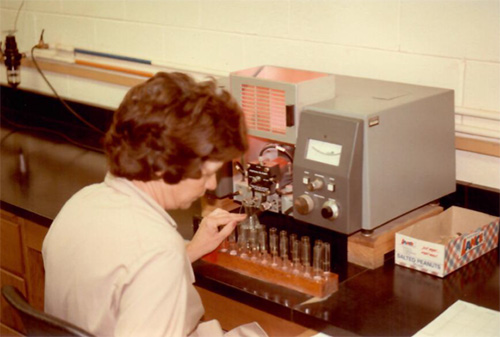
The 1990s to 2000s brought more technological, organizational, and administration changes. An Inductively Coupled Plasma (ICP) instrument was purchased for the laboratory in 1992. Because of the capacity to measure multiple elements simultaneously, the ICP greatly reduced the labor needed to analyze the various agricultural samples. Also in 1992, after 54 years of free soil testing, a fee of $5 per sample was implemented. Sample numbers dropped dramatically from 65,000 in 1991 to 28,600 in 1992. In 1995, the ASL was transitioned to the Department of Agricultural and Natural Resources, and the Plant Problem Clinic was located to the ASL facility. Dr. K. Moore was appointed Director of the Analytical sections in 1995. Collaborating with Dr. F. Sikora at the University of Kentucky, Dr. Moore pioneered the development of a safer pH buffer solution, the Moore-Sikora buffer. Several new elements were added to soil testing in the late 1990s to 2001, including boron (B), copper (Cu), and sodium (Na), and reports included CEC, acidity, % base saturation, and lime recommendations were updated in 1998. In 2007, the Plant Problem Clinic moved out of the Agricultural Service Laboratory and into the Clemson Applied Technology (CAT) building in Pendleton, SC, and the Fertilizer Laboratory took the place of the Plant Problem Clinic at the ASL building. The ASL was organizationally moved into the Department of Plant Industry of Regulatory Services in 2008, but in 2009, it was moved to Clemson Extension for 5 years, until in 2014 the ASL was moved back to Regulatory Services as an independent department, where it still exists organizationally today (2024).
Donna Woodruff with Kjeldahl distillation and autotitration instrument (ASL Collection)
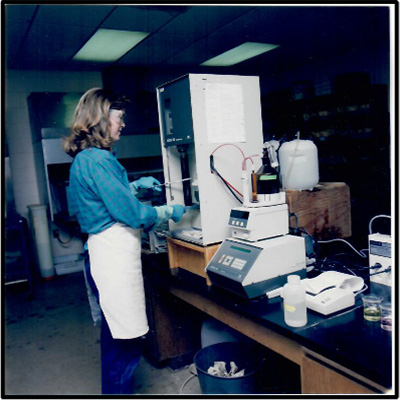
In the 2010s, the ASL continued to progress. In 2016, Dr. S.R. Alford was appointed as Director of the ASL. The Feed, Maure, Plant (FMP) laboratory section obtained a new nitrogen combustion analyzer, and a more automated ammonia and nitrate instrument was installed, along with an alkalinity autotitrator for water analysis. In 2017, as an AAFCO feed-testing certified lab, the ASL agreed to test pet food for clients. In 2019, in a collaboration with the Machine Shop on campus, new soil extraction apparatuses were designed and created. These replaced the decades-old wooden models, and the new plastic apparatus was designed to reduce labor and time required for the soil extraction process. Additionally, in 2019, the ASL began testing hemp plant tissue and implemented a crop code for hemp recommendations in 2020.
The ASL and its staff continue to move forward technologically and otherwise in the 2020s. The ASL saw approximately a 20% reduction in sample numbers because of the pandemic in 2020 and the associated effects. However, no major changes to operations occurred, and lab staff continued working full-time to accommodate needs in the food supply chain. In 2021, a new web platform, AgSamples, for soil sample entry was developed with ASL staff in collaboration with CCIT developers and put into production for use at county Extension offices, thus replacing handwritten forms. Also in 2021, the soil sample processing equipment, including grinders, dust collector, and oven, were completely revamped. The ASL’s oldest functioning piece of equipment, the soil dust collector circa 1950, was retired after ~71 years of service. Since its inception, the ASL has contributed to research efforts via sample analysis and participation in projects. However, a research data storage and reporting system was not developed until 2022 and fully implemented in 2023. Researchers at Clemson, other universities, state and federal agencies, and industry began receiving data reports in a more automated format. In 2023, the Fertilizer Lab moved out of the ASL facility to a renovated laboratory space in the CAT Building in Pendleton, SC. The ASL expanded into the vacated space with a dedicated space for water testing and research sample receiving, along with a larger break room and meeting space for employees. In the 2020s, ASL staff made great strides in public outreach and education efforts, including attendance at field days, tradeshows, & vendor events, video production, publications, podcasts, a Facebook page, monthly lab tours, and invited interviews and speaking presentations.
S. Alford, M. Atkins, and A. Elgin at the SC Corn and Soybean Growers Meeting, 2021 (ASL Collection)
